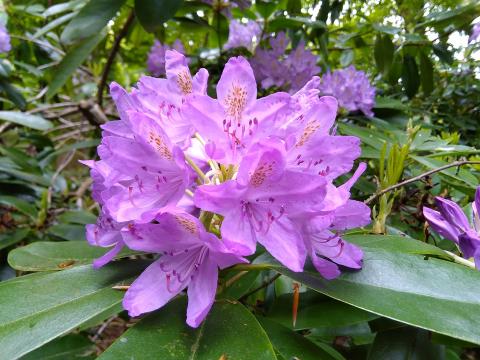Rhododendron

This rhododendron flower I observed growing in the grounds of Pitmedden House in Aberdeenshire. It is a common enough sight and easily recognisable. Yet rhododendron is a word used to describe over a thousand species across Europe, Asia, North America and Australia. Some grow only four inches, others a hundred feet. Some are evergreen, others have deciduous leaves. Some have anti-inflammatory properties for humans, others are simply poisonous. Some plants die for too alkaline a soil or too little light, while others have been known to survive a century. There are currently 2,800 varieties which humans have created through cross pollination. So many different plants under the guise of one name!
One wonders what rhododendrons actually have in common. Well according to Brown, Craven, Udovicic & Ladiges, writing in the August 2006 Australian Systematic Botany, all rhododendrons must have scarious perulae, a chromosome number of x=13, fruit that has a septicidal capsule, stamens that have no appendages, and clumped pollen. This is a little beyond my limited knowledge of botany, so I’ll just take my book’s word for it. Suffice to say, every true rhododendron does have several things in common with other rhododendrons.
However many types of rhododendron there might be, humans are even more varied and diverse. Even forgetting physical features and ethnicity, the vast array of personalities, outlooks, interests and characters prove baffling in their scope and range. Yet what have we in common? I’ll make it easy.
Number one: They have all fallen short of the glory of God.
Number two: If they believe in Christ, they shall not perish but have everlasting life.
Simple.
- Log in to post comments


 Sunday Worship 10.45am & 6.00pm
Sunday Worship 10.45am & 6.00pm